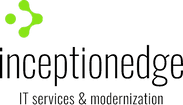Introduction
In today’s fast-evolving digital landscape, large organizations face increasing pressure to align technology with business strategy, ensure scalability, and drive innovation, all without compromising governance or security.
That’s where an Enterprise Architecture (EA) framework plays a critical role.
A well-designed enterprise architecture framework acts as a blueprint for organizational success, connecting business goals, IT infrastructure, data, and applications into one cohesive ecosystem.
In this blog, we’ll explore what makes an enterprise architecture framework truly successful, especially for large enterprises managing complex operations and legacy systems.
1. Clear Alignment Between Business and IT
The most successful EA frameworks begin with business-driven design. Technology decisions should directly support organizational objectives, not the other way around.
Key factors:
- Define measurable business outcomes for every architectural decision.
- Create a shared language between business leaders and IT teams.
- Use enterprise architecture to translate strategy into execution.
2. Scalable and Modular Architecture
Large organizations are dynamic, they grow, acquire, and evolve. Your enterprise architecture must be scalable to accommodate this growth.
What to include:
- Modular components that can adapt to new technologies or business units.
- Cloud-native or hybrid solutions that allow flexible expansion.
- Microservices-based approaches for better agility.
Think of it as building a digital ecosystem that can expand without breaking existing foundations.
3. Strong Governance and Standardization
Without governance, enterprise architecture turns into a patchwork of disconnected systems. A robust governance model ensures that every project aligns with organizational standards and long-term vision.
Best practices:
- Define architecture review boards (ARBs) and decision protocols.
- Set standardized principles for data, security, and integration.
- Establish version control and documentation practices.
Strong governance doesn’t slow innovation, it creates guardrails that maintain consistency while enabling change.
4. Integration Across Systems and Departments
In large organizations, data and applications often exist in silos.
A successful enterprise architecture promotes seamless integration between these systems to drive collaboration and efficiency.
Integration essentials:
- Unified data layer for visibility across departments.
- APIs and middleware for secure communication between legacy and modern systems.
- Emphasis on interoperability and open standards.
Integration transforms isolated data into actionable intelligence.
5. Future-Ready and Adaptive Design
Technology landscapes change rapidly, from AI and automation to cloud and edge computing.
A future-ready EA framework ensures your organization can adopt emerging technologies without heavy reengineering.
Key elements:
- Continuous assessment of technology trends.
- Flexibility to integrate automation, data analytics, and AI tools.
- Regular updates to architectural roadmaps.
An adaptive architecture isn’t built for today, it’s built for what’s next.
6. Measurable Outcomes and Continuous Improvement
Success in enterprise architecture is not one-time — it’s continuous.
Set Key Performance Indicators (KPIs) to measure effectiveness and business impact.
Example metrics:
- Reduction in IT costs or duplication of systems.
- Improved time-to-market for digital initiatives.
- Enhanced system uptime or reliability.
Regular reviews and feedback loops ensure that architecture evolves with the organization’s needs.
7. Frameworks That Work Best
Several proven frameworks guide large organizations in structuring their enterprise architecture:
- TOGAF (The Open Group Architecture Framework) – A widely adopted methodology emphasizing governance and adaptability.
- Zachman Framework – Focuses on defining enterprise components through structured perspectives.
- FEAF (Federal Enterprise Architecture Framework) – Designed for government and public-sector use.
- Gartner EA Framework – Practical approach integrating business, information, and technology perspectives.
The choice depends on your organization’s size, regulatory environment, and digital maturity, but the principles of alignment, scalability, and governance remain constant.
Conclusion
A successful enterprise architecture framework isn’t just about IT, it’s about creating synergy between people, processes, and technology.
For large organizations, it serves as a strategic enabler that drives digital transformation, optimizes investments, and builds a foundation for sustainable growth.
By focusing on alignment, scalability, governance, integration, adaptability, and measurable outcomes, enterprises can move from operational complexity to strategic clarity.


















